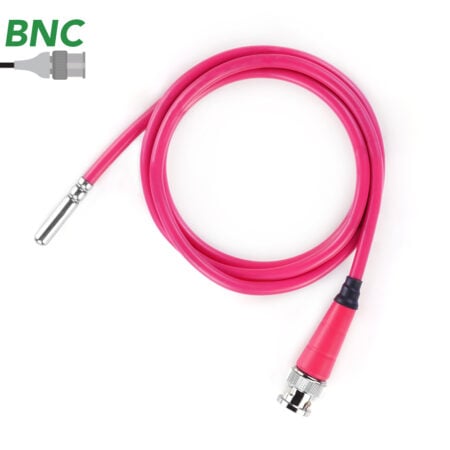Subtotal: $67.99

10 Sensors For Greenhouse Monitoring – A Guide To Precision Agriculture
Greenhouse monitoring is the backbone of precision agriculture, and it starts with the right sensors. The 10 most essential sensors to optimize crop health and
Product Categories

Temperature affects the conductivity of solutions and metals, because of the effect it has on the viscosity of solutions and the nature of ions. When temperature changes, so does conductivity; conductivity invariability increases when temperature increases.
Electrical conductivity (EC) measures the ability of a material to transmit an electrical current over a certain distance, commonly used in aquaculture, hydroponics, and freshwater systems to monitor the amount of nutrients, salts, or impurities within the water.
Conductivity levels depend on ion mobility, the valence of the ions, and temperature. Therefore, it is important to measure temperature and conductivity because conductivity is considerably dependent on temperature. This dependence is commonly expressed as a “relative change per degree Celsius” at a given temperature, usually shown as %/°C (at 25 °C). This is known as the temperature coefficient.
Depending on the material or solution, the temperature coefficient will either be negative or positive, and at very cold temperatures, superconductivity can occur. When superconductivity occurs, superconductors allow electricity to pass through with very little electrical resistance.
When the temperature in a solution increases, viscosity decreases, and an increase in ion mobility occurs, therefore the viscosity of solutions and the nature of ions directly affect the conductivity of metals and solutions. Increased temperatures in a solution can also cause an increase in ion concentration due to the dissociation of molecules.
To understand what effect temperature has on conductivity, we must look at the Temperature Coefficient of Variation, also known as the temperature compensation. This is the rate a solution’s conductivity increases when temperature increases, expressed as a percentage (%).
The Temperature Coefficient of Variation will depend on the type of solution, some examples can be seen in the below table:
| Solution Type | Temperature Coefficient of Variation (%/°C shown at 25 °C) |
| Pure water | 5.2%/°C |
| Ionic salts & freshwater | ~2.0%/°C |
| Acids, alkalis, & concentrated salt solutions | 1.5%/°C |
Temperature compensation is usually calculated automatically with a built-in thermistor inside a conductivity probe. If the temperature is not compensated when taking a conductivity reading, the results will not be reliable, especially if the temperature is far from 25 °C.
The electrical conductivity of semiconductors increases as temperature increases. When temperature increases the electrons can jump from the valence band to the conduction band in the semiconductor.
When temperature increases in metals, the positive ions inside the metal conductor vibrate more and the thermal speed of the electrons increases, resulting in an increase in resistance, therefore a decrease in metal conductivity is seen.
To understand why the electrical conductivity of metals decreases when temperature increases but the electrical conductivity of semiconductors increases, it is important to understand the structural differences between metals and semiconductors on an atomic level.
Metals contain free electrons which can displace position to allow a current to flow in them. However, semiconductors have less free electrons because they have a higher nuclear charge compared to metals which are conductive. This is why they are called semiconductors, as they only partially conduct electricity.
When temperature increases in liquids, the molecular movement also increases, which prevents heat transportation through the liquid. Therefore, when temperature increases, the thermal conductivity of the liquid decreases as the liquid expands and the molecules move further apart.
Conductivity probes and circuits measure conductivity by applying a voltage between two electrodes within a probe. The probes not only measure conductivity, but they are also able to report a temperature-compensated conductivity value, usually measured in the units of µS/cm.

When using a conductivity probe, it is best to have a temperature probe during calibration to ensure the solution is close to 25 °C, because of the dependence conductivity has on temperature. This raises the importance of always calibrating the conductivity probe before measurement as slight temperature changes can have a noticeable effect on conductivity readings.
Temperature has a significant effect on conductivity readings. In critical applications, it is essential that conductivity measurements are taken with a reference temperature to ensure high accuracy measurements. This is because conductivity invariability increases when temperature increases.
If you have any questions regarding temperature or conductivity or are unsure which temperature/conductivity probe will best suit your needs, please do not hesitate to contact the world-class team at Atlas Scientific.







Greenhouse monitoring is the backbone of precision agriculture, and it starts with the right sensors. The 10 most essential sensors to optimize crop health and

Hydroponics has revolutionized the way people grow food, offering soil-free methods that deliver nutrients directly to plant roots in water-based systems. But success in hydroponics